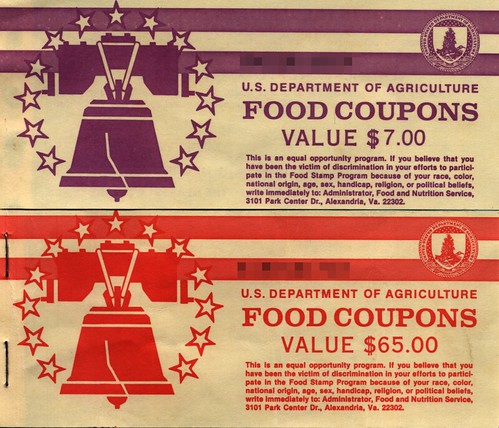It was recently reported that the U.S. House of Representatives would like to reduce the SNAP budget within the Farm Bill by $36 billion over the next ten years. But, in fiscal year 2011, the total cost of administering SNAP was $6.9 billion. So, the program formerly known as food stamps could face a $3.6 billion reduction each year, effectively reducing the budget by half. Thankfully, the Senate will probably defeat the measure. However, the idea that there are groups opposed to funding proven social programs leaves me rather concerned.

While I do understand legislators’ need to be fiscally responsible with government funds and reign in unnecessary spending, nutrition assistance for low-income individuals and families is not an unnecessary expense. Regardless of the political affiliation, alleviating hunger and its related problems should be a national priority. Now, I am not advocating that people should remain recipients of SNAP indefinitely, rather the ability to receive assistance should be there.
You may be wondering why does this this matter? And how does this relate to philanthropy in general. Well, I am glad you asked. Contrary to popular belief recipients of SNAP are not homeless or unemployed. As the USDA’s April 2012 report entitled “Building a Healthy America: A Profile of the Supplemental Nutrition Assistance Program” highlights:
- 41% live in households with earnings
- 75 percent of the people who receive benefits for a year or less live in households with earnings
- About 55% of those receiving SNAP payments are children (47%) and the elderly (8%)
- About 53 percent of the non-elderly, non-disabled adult SNAP participants were either working full- or part-time, living with another employed adult, or subject to a meaningful work requirement program
- The Census Bureau indicates that SNAP would lift 3.9 million Americans—including 1.7 million children—
But, a government reduction in funding would make this proven safety net develop gaping holes. More over, this signals to the general public that SNAP is inconsequential. And that hunger issues for low-income families will be addressed by some other entity (read: religious organizations, wealthy charities, foundations and individuals). Sounds like a great plan, right? Not at all; it is bad public policy. Instead of looking through the Farm Bill and removing the ineffective programs that are not meeting their intended purposes, policy makers are making SNAP the scapegoat and diversion.
However, this all makes me wonder where are the SNAP recipients voices in this debate? Shouldn’t they be able to tell their own stories and show the value that this program provides?
